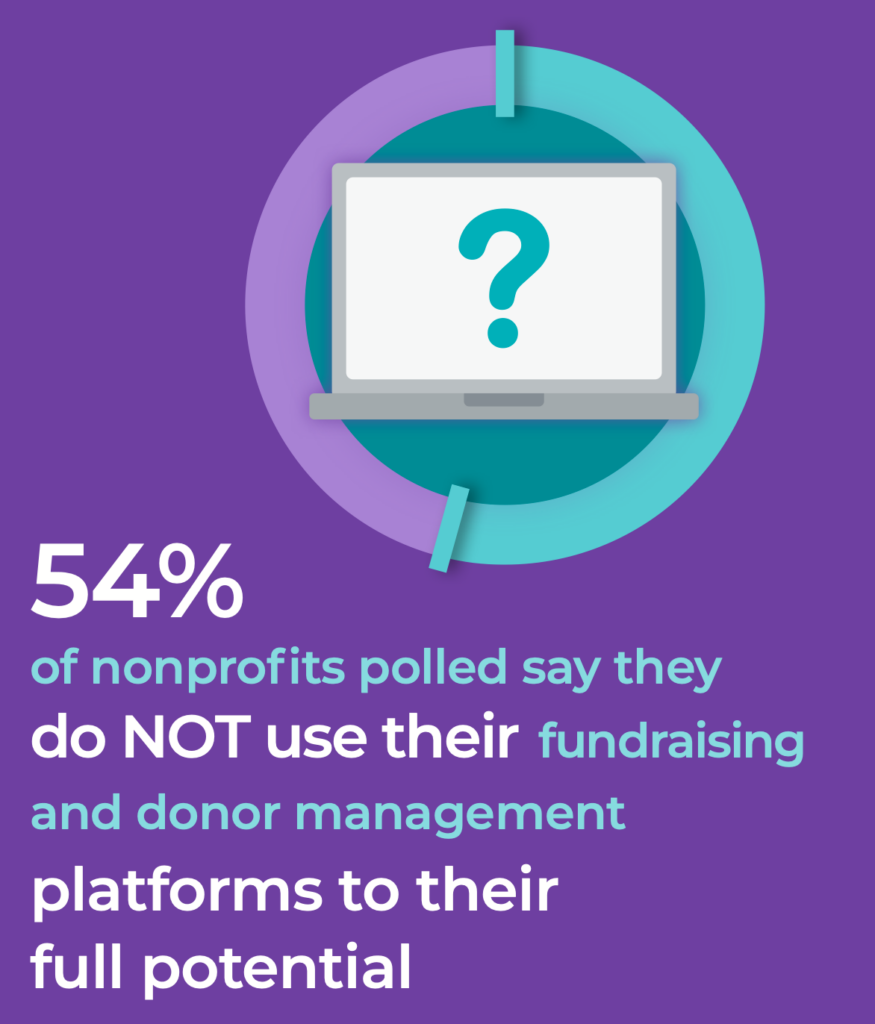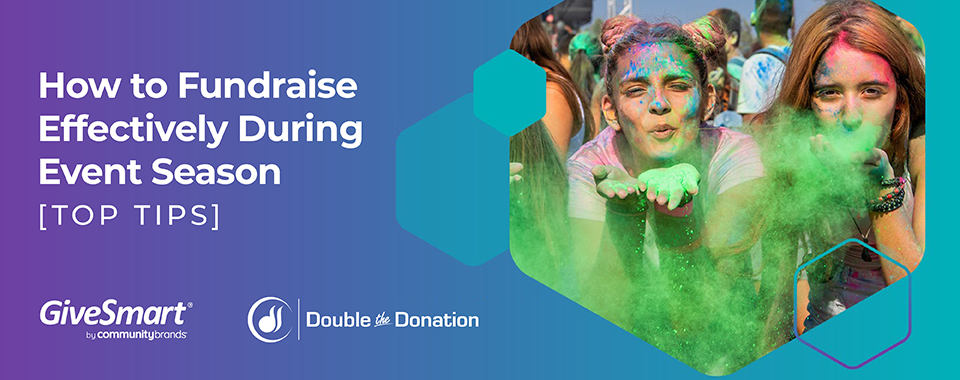Mar 12, 2024
How to Calculate Net Gain from Your Nonprofit Event

With in-person events as a cornerstone fundraiser for many nonprofits, nonprofits are always looking for ways to raise more all while spending less. With two out of three nonprofits feeling pressured to increase revenue streams, it is increasingly important to ensure your fundraising events are driving revenue for your mission.
What is Net Gain for Nonprofit Events?
Usually, nonprofit organizations need to spend money when they host events. Typical costs for in-person events include venue rental, catering, marketing, and staffing. Along with expenses connected directly to the event, there are also indirect costs to account for, such as staff salaries. If employees spend 300 hours planning the event, that’s time they must direct away from other activities.
Ideally, the event ROI for nonprofits will equal more than 70% of the cost of hosting and organizing. To figure out the event’s net gain, or how much the programming brought, nonprofit staff must subtract its direct and indirect expenses from the total proceeds.
If you’re looking for simple fundraising games for your upcoming event, gala, or other campaigns that will delight your donors, download our guide today!
How to Calculate Net Gain for Nonprofit Events
Calculating net gain for nonprofits involves crunching a few numbers. You’ll need three figures to determine how much an event brought in for your organization:
- Gross revenue
- Direct expenses
- Indirect expenses
Gross revenue is all the money raised during an event. If you add up every monetary and in-kind donation, you’ll get this figure. Gross revenue is helpful, but you only gain limited insights from it. To calculate how much your event raised for your organization, you’ll need to subtract direct and indirect expenses from gross revenue. To do that, you’ll first need to tally up how much those expenses were.
Direct expenses
Direct expenses are the more straightforward costs associated with throwing an event. They can be relatively simple to calculate, as all you need to do is look at how much your organization paid for specific program features. For instance, if you hired a band to play during a gala, that fee is one direct expense. The amount you paid for the catering service is another. Other common examples of these include:
- Venue rental
- Car rental
- Decorations
- Flowers
- Entertainment — emcee, band, DJ, other performers
- Food and drink
- Invitations and postage
- Event fundraising software
- Security at the event
Indirect expenses
Indirect expenses are event-related costs your organization doesn’t pay out of pocket. They include the cost of time spent putting together the program by paid staff members and volunteers such as board members.
To calculate the indirect cost of your staff working on the event, keep track of how many hours they spent planning, preparing, and attending the program. Then, multiply that number by their total hourly earnings, including benefits. So, if your organization’s associate director spent 80 hours on the event and their salary works out to $50 per hour, the total indirect expense of this time is $4,000.
To calculate the indirect cost of volunteer hours spent planning the event, use the national average value of volunteer time, $31.80 per hour. If your volunteer team spent a collective 100 hours on the event, their contributions’ indirect cost is $3,180.
Net gain = gross revenue – expenses
Once you have calculated the total cost of the event’s expenses, you can subtract that amount from the total revenue to find the net gain. If you ended up raising $150,000 during the event but spent $50,000 on direct expenses and $10,000 on indirect expenses, the program’s net gain was $90,000.
Cost to raise $1
Along with calculating the net gain from a nonprofit event, it can be useful to assess how much you had to spend to raise $1. Calculating the cost to raise a dollar gives you an idea of whether you are overspending on your galas and other events. To see how much you spend to raise $1, divide the total expenses by the net gain. If your net gain was $90,000 and you spent $50,000 on the event, your cost to raise $1 is $0.55. If you spent $100,000 and raised $90,000, your cost to raise a dollar would be $1.11, meaning you spent more than you brought in. The lower your cost to raise a dollar, the better.

Fundraising Event Costs: Things to Consider
As with any program, there are some areas where it’s better to spend than save. Here are some expenses not to skimp on.
- Fundraising and auction platform: The easier it is for people to donate or participate in your fundraiser, the more you’ll raise. Choose your platform carefully, looking for one that delivers friction-free bidding and donating experience to your donors.
- Marketing and communication: You’ve got to spread the word about it and make it clear how people can participate. Have a marketing pro or high-level volunteer handle all event communications, including promoting it on social media, through email, and direct mail.
- Catering and staffing: If people are spending hundreds of dollars on tickets, you have to give them more than a few small bites. Some venues allow you to bring in your own alcohol, and if you can get it donated or partially donated by a distributor, it can make a significant difference to your bottom line. Staffing cost for service staff is a rising, fixed cost. See what you can do in other areas to ensure that this doesn’t make or break your ROI.
- Printing: Do you need to print your program? Can you get an in-kind sponsorship or a partial one from a printer? Is there a sponsor you can get on your paddles?
- AV: AV costs at many venues are astronomical. Ask for a detailed, itemized contract and see what is truly necessary to showcase your mission to your guests.
- Contract Cuts: Often, venues will inflate fees such as corkage, table rentals, linens, and more. Ask for discounts to have the total cost be closer to wholesale or cost. The worst they can say is no. The right venue will work with you, given you’re raising money for your mission
Find Fundraising Event Success with GiveSmart
As event season ramps up, our team of experts has curated the top blogs, checklists, on-demand sessions, and more to power your nonprofit organization’s fundraising event, auction, and golf outing goals.
Visit our Fundraising Event Success Hub today.
Related




